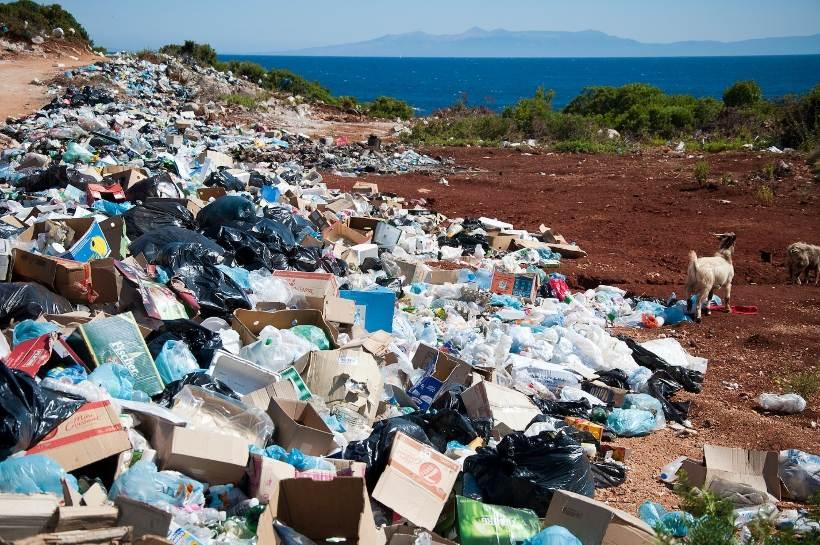
Even if one has never studied the Dharma, mindful work in the sustainability sector over the last decade or three carries many powerful teachings of Buddhism. Among these teachings are the impermanence of our world—in both natural and economic systems—and the interdependency of all phenomenon, from ocean algae to the internal combustion engine. Indeed (and most of all) a lesson that comes from work in sustainability is that of the need for greater compassion amid the escalating threats we all face.
As my work and practice have overlapped these past few years, it has occurred to me that much of what the eco/sustainability/resiliency movement(s) have been trying to accomplish overlap greatly with the teachings of the Noble Eightfold Path. Following this idea into history a bit, I have found that the Noble Eightfold Path can be used as a helpful structure to guide not only individuals, but institutions in how to accomplish similar lasting change in this thing we call sustainability.
Right View/Understanding
In Buddhism, Right View or Right Understanding is often directly connected to the Four Noble Truths. That is, if one learns these truths and is able to see the world through this view, much of the path becomes clear. This Right Understanding can be summarized in the awareness that we live in a state of dissatisfaction, that this should be investigated, that this dissatisfaction arises from causes and conditions, and that this dissatisfaction can be transcended. Indeed, this fundamental view of reality echoes throughout much of Buddhist practice and even the other steps on the path. So how does this relate to sustainability?
The first step is replacing the “dissatisfaction” of the view of the Four Noble Truths with “abusive systems.” We live in systems that abuse the environment and most sentient beings: for example, pollution, extractive economics, and systemic inequality. This abuse should be investigated through systems research, journalism, and similar means. This abusive system arises from causes and conditions: our energy sources, economic systems, and colonialism. This system can be transcended if we address the causes and conditions: through sustainability, energy transition, and so on.
This same “moment” in sustainability prajna (Skt. insight) can be seen in various episodes of history and culture with varying degrees of impact. In the 1800s, Germany passed regulations on logging to protect its Black Forest from being cut down completely. In the 1970s, Japan passed massive reforms after some bodies of water became toxic from pollution runoff. I call this moment the “hey, something is wrong here” moment. And it happens to individuals increasingly often as evidence of pollution becomes completely unavoidable.
Yet, simply observing, “Hey, something is wrong here,” (Right View) is not enough. Thirty years of Earth Day festivals and infomercials have shown this. This brings us to Right Resolve or Right Intention.
Right Resolve/Intention
Before we even begin taking action, the resolve behind that action is pivotal on the Buddhist path. In the religious view, this means avoiding harmful intent behind the action, committing to compassion, and a devotion to peaceful renunciation. These commitments in turn will help give our actions a strong foundation; if your actions are still causing harm or ill-will, recalibrating your actions to these Right Intentions will serve as a correcting force on the path, providing a kind of spiritual touchstone.
One can see these resolutions and intentions nearly everywhere within sustainability. In fact, they seems to be where we spend the most of our time presently. The US Clean Air and Water Act of 1972, the United Nations Sustainability Development Goals, and the Paris Climate Accords can all be seen as having Right Intention. They give us standards to meet and goals to achieve. With these goals and accords, we can ask: “Is this new technology alleviating poverty?” “Are these new filters improving air quality?” and so on. If they are not, we can abandon them in search of things that do uphold these Right Intentions in the same way that one would look to the Dharma to recalibrate their Buddhist practice.
The next section of the path builds on these intentions to be sure we know how to communicate them properly. What does “sustainability” even mean, after all? Sustainability of my bank account? Of oil production? Of forests and animal species?
Right Speech
What constitutes Right Speech in Buddhism is very specific. No lying, no sowing of discontent, no harsh or rude language. Indeed, this specificity seems to be of the essence of this teaching. Confusion and misunderstanding are one of the most common events of mass human interaction. In the West, Francis Bacon wrote on this as the “Idols of the Marketplace,” saying: “For it is by discourse that men associate, and words are imposed according to the apprehension of the vulgar. And therefore, the ill and unfit choice of words wonderfully obstructs the understanding.” So, yet again, this idea of the importance of speech shows up in not only in the Buddhist teaching, but in many other “enlightenment” focused thinkers and actors.
One of the first examples of misunderstanding one may encounter in sustainability is the term “organic.” To chemical engineers and even petroleum science, organic means anything derived from carbon. By this definition, oil is an organic product. However, to the “green” world, organic means something cultivated without pesticides or chemical fertilizers. For years, this incorrect—or imprecise—speech has allowed for actors on either side of the aisle to discredit and short change positive efforts. In fact, the situation is even more insidious because even plastic is technically “biodegradable”—it just takes thousands of years.
To reiterate how these points on the path are not hierarchical, one can see how returning to Right Resolve can address the issues outlined above. If the intent is to clean the air, it does not matter if oil is organic or not, what matters is the question, “Are our efforts cleaning the air?” It is this kind of clarity that can truly take us to Right Action.

Right Action/Conduct
On the Noble Eightfold Path, Right Conduct is arguably the most specific step. This aspect states quite directly: no lying, no killing, no stealing, no consuming intoxicants, no sexual misconduct. While nuances of these points can vary from layperson to monastic, the language is plain and with a clear intent to minimize harm to other beings. In sustainability, the specifics are a bit harder to pin down, but lists of commandments exist all the same.
Instructions in Right Conduct for sustainability are ubiquitous: take reusable bags to the supermarket, plant more trees or native plants, reduce your carbon footprint, and so on. Not to mention the progenitor of the movement: reduce, reuse, recycle. Where Buddhist Right Action aims to reduce harm to other beings, these commandments are united by the Right Intention of reducing the strain on the planet’s resources and resulting environmental impacts. Different areas require different emphasis, just as Right Action can be different for a layperson and a monastic. In Arizona, for example, water conservation is key. In Texas, reducing industry emissions is more urgent.
Over the last decade or so of my work in sustainability, I have noticed that most people with whom I interact are getting better and better about Right Action in terms of sustainability. People have pollinator beds, urban food gardens in schools, and every grocery store has bins to recycle plastic bags, if you know where to look for them.
This imbalance in how individuals are becoming greener, yet the “system” is not, is no coincidence. Over the last 30 years, companies have placed the burden of being sustainable on consumers instead of on themselves. This is why all of us are told to recycle, turn off lights, and in general change our behavior, all while companies burn coal and produce single-use plastics. A sad outcome of this is that commercial waste has worsened in recent decades precisely because industry has been given economic allowances for mass production with the assumption that every customer would take on the burden of disposing of the waste. This disconnect between industrial behavior and domestic behavior leads to what I see as the lynchpin of the sustainability Eightfold Path: Right Livelihood.

Right Livelihood
Livelihood can be summarized as how an individual earns a living and sustains themselves. And again, Buddhism teaches us to do so in a way that reduces harm at its core. Specific examples are given: not to trade in weapons, make poisons, butcher meat, or traffic in humans. Looking at the iterations of interpretation for this point, to me it seems that Right Livelihood in the Buddhist worldview is one that not only reduces harm in the world, but also allows the individual to keep space for their spiritual practice.
A personal favorite example is the intersection of Buddhist medicine with the visually impaired in Japan. For centuries in Japan, the visually impaired have trained in traditions of massage or bone-setting. This work prevents their disability from destroying their livelihood while also alleviating the suffering of their patients. Turning to sustainability, Right Livelihood is much more challenging.

What might one offer when asked for an example of a sustainable livelihood? Examples such as organic farmer, green energy technician, or corporate responsibility manager might come to mind. Yet not everyone can have these jobs. What about grocery store workers, caregivers, or nail salon workers? Can their work be adjusted to be a greener livelihood? Let’s say they could. Let’s assume that they are able to win good recycling contracts for their businesses, buy eco-friendly cleaning supplies, and install super-efficient windows, and maybe they even have rain gardens at home to go that extra green mile. Even with all of this, if they live in the city of Houston, as I do, they will still need to drive vehicles on emission-heavy highways and order goods from supply chains that are wildly polluting and inefficient. In corporate settings there may even be a policy that all boardrooms be stocked with water bottles because “that’s what the shareholders like.”
What I am attempting to illustrate here is that in the context of the global systems in which we find ourselves embroiled, even a completely sustainable livelihood falls flat the moment it enters the realm of industry and the infrastructure that connects it around the world. What is industry but collective livelihood made manifest? To further illustrate the essential nature of this junction, the vast majority of pollution and emissions come not from individuals but from industrial giants. Compounding this issue is that because of this dependency, the powers that be can always claim that reducing emissions or imposing regulations will be “bad for jobs” and they will inevitably be correct. This speaks directly to the fact that many livelihoods today are completely dependent on dirty systems set up long before the people who engage in them were born and in which they now must survive. Even a completely organic supermarket must order produce packed in plastic due to health codes, have them delivered by gasoline-powered engines, and run their air-conditioning with whatever mix of energy their region produces—likely reliant on petroleum or coal. This means that to achieve a truly sustainable livelihood, one must somehow be able to make a living completely “off grid” or invent their own means of production. While this is attainable with monumental effort, it does nothing to impact the dirty grid from which the “eco-renunciant” has disengaged. The power plants churn on even if you are a foraging masseuse flushing your toilet with reclaimed rainwater.
I highlight this stranglehold that industry has on our livelihoods because this is the key point at which agency is undercut in any sustainability argument or policy. Indeed, it is at this intersection that a truly sustainable world can be realized. We can pass clean-air legislation, draw up sustainable development goals, and change every little bit of our lives to be zero-waste, but so long as the infrastructure of our lives is dependent on dirty systems, every single livelihood will be dirty, no matter the efforts and morality of the individual or company. Hence, for any of us to ever dream of attaining Right Livelihood, we need to change the stage on which every single livelihood must perform and that stage is global infrastructure. How to do this brings us to Right Effort.

Right Effort
The above might sound nigh on impossible, but in turning to Buddhism’s teaching on Right Effort one will find equally challenging directions. Right Effort instructs practitioners to rid themselves of unwholesome states of being, to prevent these unwholesome states from arising in the first place, and to develop and nurture wholesome states in their stead. These are pretty lofty goals, very similar to the goals of sustainability which, if conflated, can both be understood to be suggesting a complete rooting out of bad systems. In Buddhism, the bad systems are in our habits and minds. In sustainability, the unwholesome states are in our infrastructure, as outlined above.
So what might be examples of Right Effort in sustainability? Certainly, reducing the use of fossil fuels is a common one on the interpersonal level. If you can plug in your computer and you know that the infrastructure powering it has no emissions, that’s a great accomplishment. Another interpersonal example is anything that completely ends a cycle of consumption in your life, such as swapping tissues for a washable handkerchief; that is, instead of swapping regular tissue for recycled tissues, a handkerchief means no more tissues at all for the rest of your life.
On the global scale, we simply need to change the materials with which we build and power the world. Returning to Right Livelihood, as long as petroleum-based plastics are the cheapest option for manufacturing everything from plates to water bottles, people such as small-business owners who are simply trying to make ends meet will generate pollution by necessity rather than choice. Right Effort here would be doing all we can to ensure that as many plastics as possible are plant-based so that the waste from homes and small businesses can be deployed to industrial composting. This, in turn, can be used to create viable topsoil and fertilizer. Together, these efforts strike at the heart of where the bad systems are articulated and will do more than any number of Earth Day festivals or carbon pledges. Right Effort in sustainability is effort that impacts the infrastructure more than culture. To understand how to look for these impacts, one must then have Right Mindfulness.
Right Mindfulness
Back to Buddhism, Right Mindfulness is described as being “diligently aware, mindful, and attentive” with regard to our body, feelings, mind, and concepts. Here, there is a kind of pragmatism in that Right Mindfulness can tweak and guide other aspects of the Path such as Right Speech and Right Effort. Right Mindfulness is not when you are going through the motions, but instead are actively observing what is happening within and without, and if it is achieving the Noble Eightfold Path. In sustainability, Right Mindfulness is very important for cutting through advertising and even your own psyche.
Every sustainability conference is chock-full of people claiming that they are there to help you save the world. But there are often veiled attempts to sell a new product and create a new market—often known as “greenwashing.” One of my favorite examples is “boxed water.” Lauded as a recyclable alternative to bottled water, the box is not, in fact, recyclable due to aluminum and plastic linings. Right Mindfulness, guided by the Right View, will quickly expose this because the Right Resolve is to reduce waste. So a truly enlightened action would be to find a sturdy already-existing container to use until it can no longer be used. One could distribute reclaimed mason jars from a thrift store to fill with water and be many times more sustainable than if the entire world were to shift to boxed water.
To illustrate with an example, I point to idling trucks. Many anti-idling laws state that they are supported by a “culture of compliance” in that if you see a truck idling on your business’s property, you can tell the driver stop and cite the law. Anyone who has tried this knows it simply sows discontent—not Right Speech. You end up angry, the trucker ends up angry, and the problem remains unsolved. Right Mindfulness applied to the situation can illustrate this. Then, perhaps, the same energy used to fight could be saved and applied to other areas, such as providing political support to those who are pushing for cleaner vehicle infrastructure, or even planting an extra two trees at your community’s next Arbor Day—promoting Right Effort.
In short, realizing that sustainability is neither a fight nor a war is integral to having Right Mindfulness about the movement. Wars inevitably result in lines in the sand and exhaust entire generations, leaving them with no energy for planting, growing, and healing. When sustainability can be seen instead as a growth process, one can grasp the final point of the Noble Eightfold Path: Right Concentration/Transcendence.

Right Concentration/Transcendence
I save this aspect of the Noble Eightfold Path for last, not because it is the final step—again, this is not a hierarchical system—but because it is the most profound. Buddhist writings describe how Right Concentration or meditation cultivates four levels of transcendence (Skt: dhyana). Each of these levels is described by certain changes in our emotional state and perception of the world, ranging from the discarding of negative intentions to the cultivation of lasting equanimity.
This can be an interesting caveat when pulled into sustainability discourse, for, in a state of full equanimity, how can one still feel upset about such worldly problems? Indeed, the more hermetic teachings of Buddhism might even argue that trying to “save the world” is itself a form of attachment to be transcended. There is no simple reconciliation of these interpretations. However, the intentions of transcendence philosophy—even a soteriology—can indeed be found in the sustainability movement to bring our comparison to a conclusion.
The United Nations Sustainable Development Goals share many goals that not only Buddhism but religion in general have historically taken on: ending poverty and hunger; promoting quality education; peace and justice; and the protection of non-human life. Certainly, such lofty goals require a lot of work, so how can one even suggest transcendence in the face of so much work? Why meditate when you could spend the same time taking action? This is precisely where I think notions of insight and rest can swoop in to rebalance the movement without a complete renunciation of hope.
Once such insight I have gained by a combined practice of sustainability and Buddhism is that a sustainable world is a slower one, not only for our natural resources but for our collective mental health. If you look around the planet, many people’s ability to self-sooth has been hijacked by commodities. As a result, even when they are resting, they are consuming. What’s more, the more stressed people feel, the more they consume in an effort to relax—be that Netflix, intoxicants, or toxic news.
This negative feedback loop speeds up our markets, and in turn speeds up the consumption of natural resources. Yet the moment a person begins meditating, their carbon footprint drops to near zero for the span of their sit. Additionally, the break from climate anxiety and the fast-paced external world can return energy to the person in ways that watching the news or researching solutions could never do. Instead of feeling paralyzed and hopeless at the end of the activity, they might instead have just enough energy to work in the garden a bit longer, or have one less beer—in essence, they need less.
In a world where every cause is “one more thing to worry about,” we simply need more language about the positive impact of rest to counteract the mania around us. However, this rest must be guided by Right Intention” followed by Right Action, rolling all the way up to Right Meditation. This meditation should reduce your resource consumption, restore your energy for Right Action, and perhaps even help others around you to slow down as well.
Closing
I have always said that the goal of sustainability is to no longer exist—for if we were all doing the right thing, why have the sustainability movement? Truly, as long as sustainability is not business as usual, it will be seen as a foreign agent, an “alternative” idea, or even an antagonist. This quirk has always reminded me of the classic question in Buddhism: “Isn’t the desire to end desire itself a desire?” These twin paradoxes are why I was inspired to offer the Noble Eightfold Path as a way to see beyond the “fight” for sustainability. Just like compassionate practice, sustainability is not about beating each other—and ourselves—over the head with the right thing to do, but instead observing the truth of the moment to access wisdom beyond partisanship and assumptions. I hope that the above can illustrate just how impactful the pragmatism of the Noble Eightfold Path can be in helping us reframe and foster a more mindful and less reactive quality to the sustainability movement. In doing so, we will be one pivotal step closer to sustainable systems being “business as usual.”
Related features from BDG
Are the Sustainable Development Goals Today’s “Opium of the Masses?” An Interview with Prof. Kohei Saito
The Path of Engaged Buddhism in a Divided World: An Interview with Ven. Pomnyun Sunim
Buddhism and Sustainability: A Conversation with Green Monday Founder David Yeung
Walk with Me – Insight on Managing Sustainability from Buddhist Teachings
Sustainability and Wellness: What are we even talking about?












